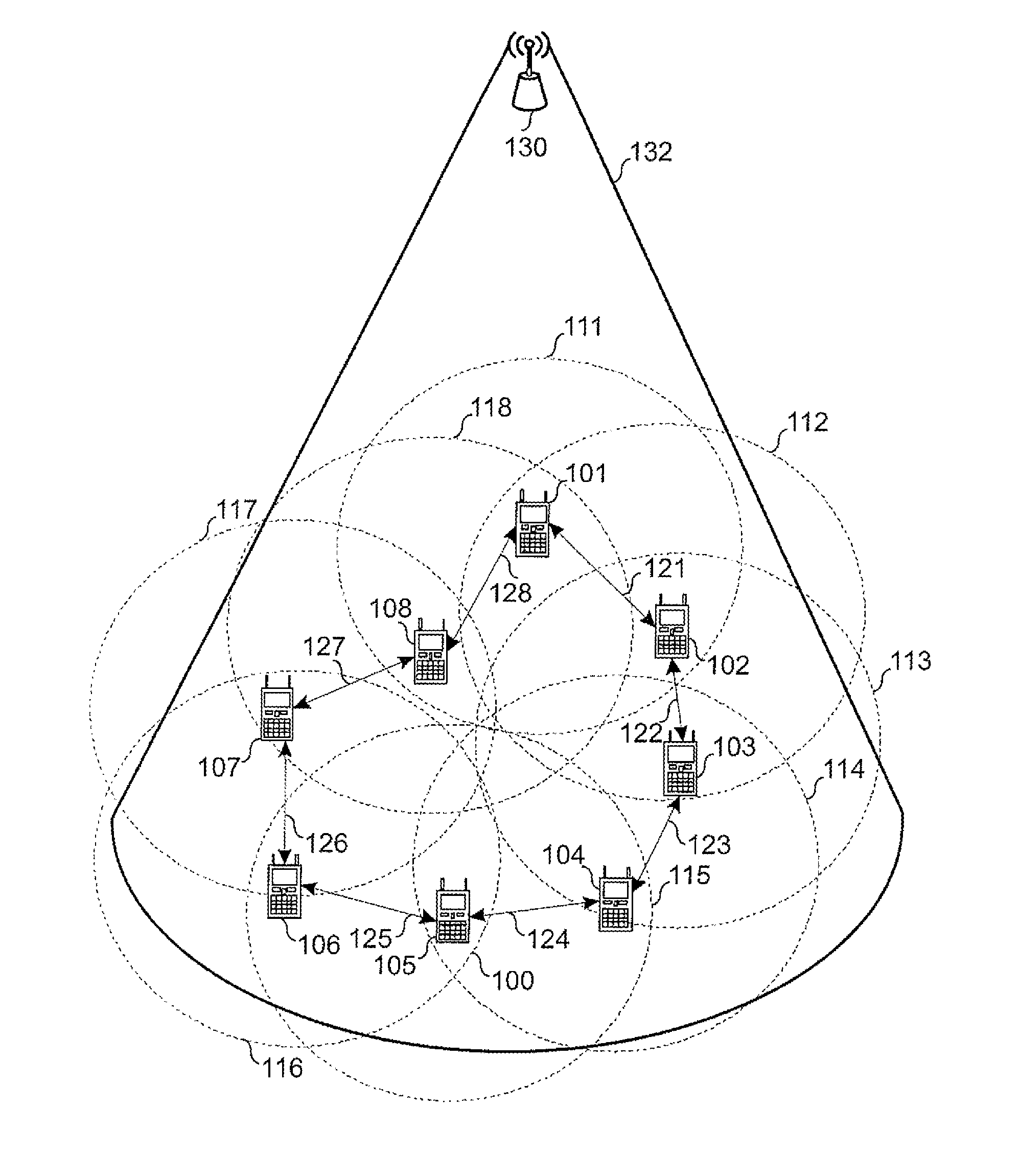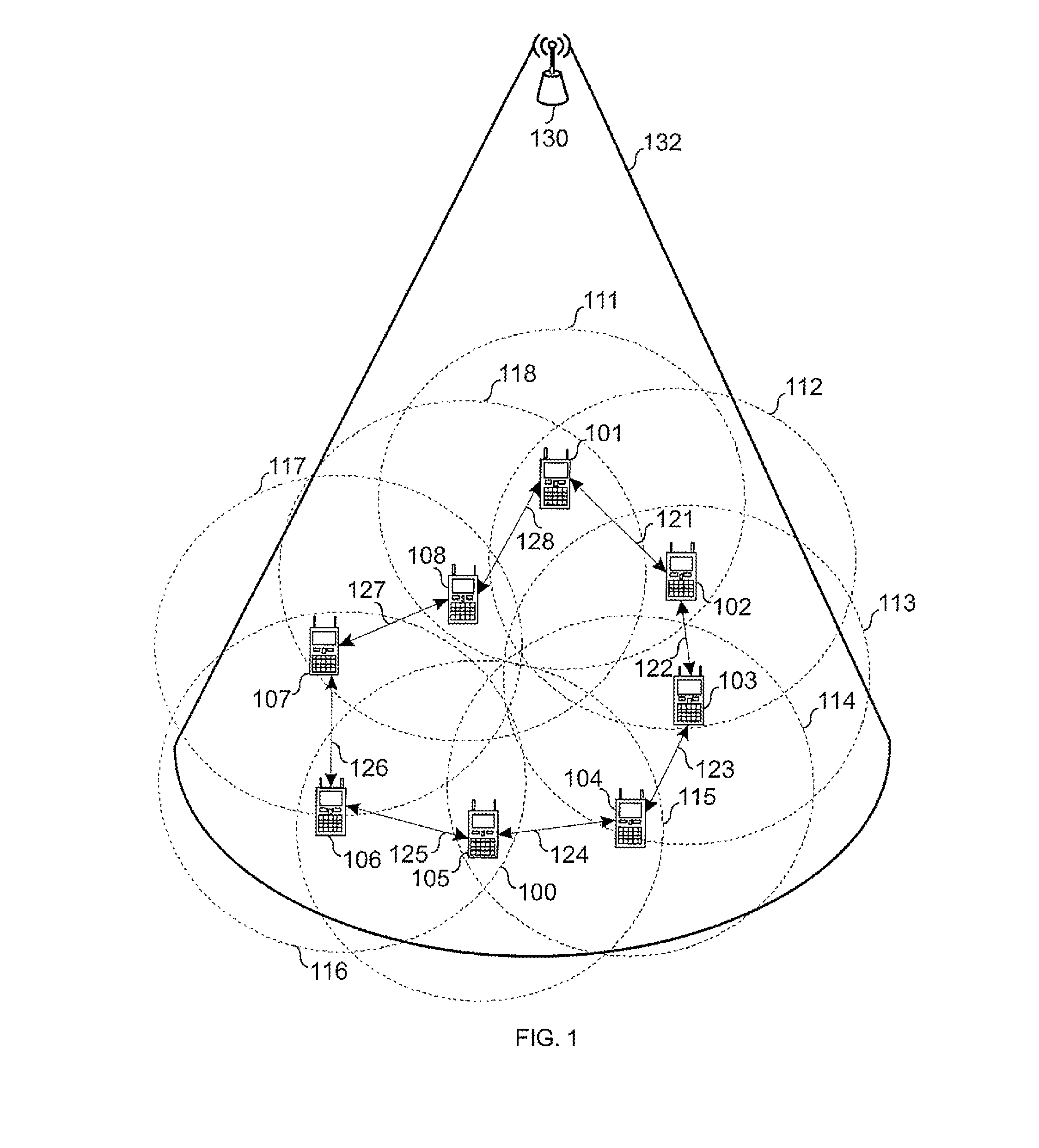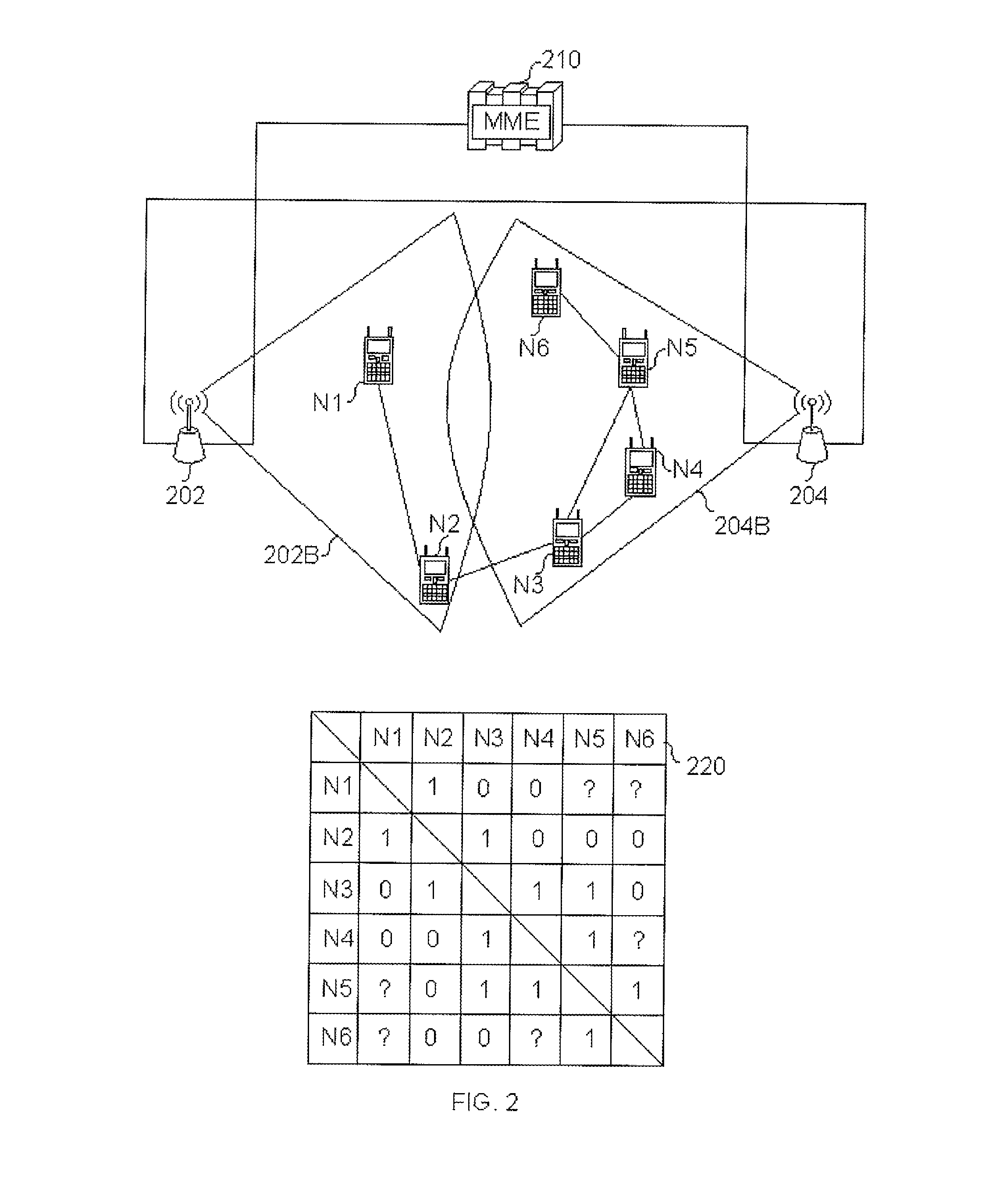Apparatus and method for device-to-device communication route establishment in a mobile communication system
- Summary
- Abstract
- Description
- Claims
- Application Information
AI Technical Summary
Benefits of technology
Problems solved by technology
Method used
Image
Examples
Embodiment Construction
[0095]Reference will now be made in detail to the embodiments of the present invention, examples of which are illustrated in the accompanying drawings.
[0096]FIG. 1 illustrates a cell and a plurality of communicating mobile nodes within a mobile communication system in one embodiment of the invention. FIG. 1 illustrates a base station 130 providing a cell 132. The cell may be included in an LTE mobile communication system, including, for example, an Evolved UMTS Radio Access Network (E-UTRAN). In FIG. 1 there is only illustrated base station 130 from the E-UTRAN. There may be a plurality of other base station together with their cells. Base station 130 in E-UTRAN parlance is called an Evolved Node B (eNB). Base station 130 may include at least one Remote Radio Head (RRH) (not shown) communicating with a base station server (not shown) within base station 130. In the area of cell 130 there are shown mobile nodes 101-108. The mobile nodes may also be referred to as User Equipments (UE)...
PUM
 Login to View More
Login to View More Abstract
Description
Claims
Application Information
 Login to View More
Login to View More - R&D
- Intellectual Property
- Life Sciences
- Materials
- Tech Scout
- Unparalleled Data Quality
- Higher Quality Content
- 60% Fewer Hallucinations
Browse by: Latest US Patents, China's latest patents, Technical Efficacy Thesaurus, Application Domain, Technology Topic, Popular Technical Reports.
© 2025 PatSnap. All rights reserved.Legal|Privacy policy|Modern Slavery Act Transparency Statement|Sitemap|About US| Contact US: help@patsnap.com



